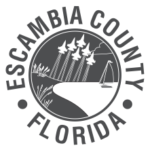Starting January 2017, NFIP policyholders will begin receiving letters about two months after their policy renews in reference to possible upcoming changes to their policy. Policyholders who renewed policies in October 2016 through December 2016 will also receive their first mailing. FEMA will continue to mail the letter at each subsequent renewal.
The Homeowners Flood Insurance Affordability Act of 2014 requires gradual insurance rate increases for properties currently receiving artificially low (or subsidized) rates, rather than immediate full-risk rate increases. HFIAA requires increases to premiums for most subsidized properties of no less than five to 15 percent annually, but no more than 18 percent for an individual policyholder--with limited exceptions--until the premium reaches its full-risk insurance rate.
Because policy information varies from one policy to the next, the letters encourage policyholders to contact their insurance agent to discuss their unique situation, or visit FEMA.gov/cost-of-flood to learn about their options.
All policyholders will eventually receive a letter upon the renewal of their policy. The NFIP has identified seven categories of policyholders to receive unique information based on their risk and current premium rates. The letters for each policyholder category are as follows:
- Letter A: Newly mapped into the Special Flood Hazard Area, or high risk flood zone.
- Letter B: Standard X Zone (moderate risk) – not grandfathered
- Letter C: Standard X Zone (moderate risk) – grandfathered
- Letter D: Pre-FIRM subsidized, primary residences
- Letter E: Pre-FIRM subsidized, non-primary residences and businesses
- Letter F: Preferred Risk Policy (PRP)
- Letter G: Post-FIRM, full risk
Information for insurance agents, copies of each category letter, details about what each letter means, and tips for how individual policyholders can lower their flood risk (and potentially their flood insurance premiums) can be found at FEMA.gov/cost-of-flood .
The information that NFIP policyholders will receive, will help them make the best decisions about their flood risk, including how to better prepare for flooding disasters in their community.
